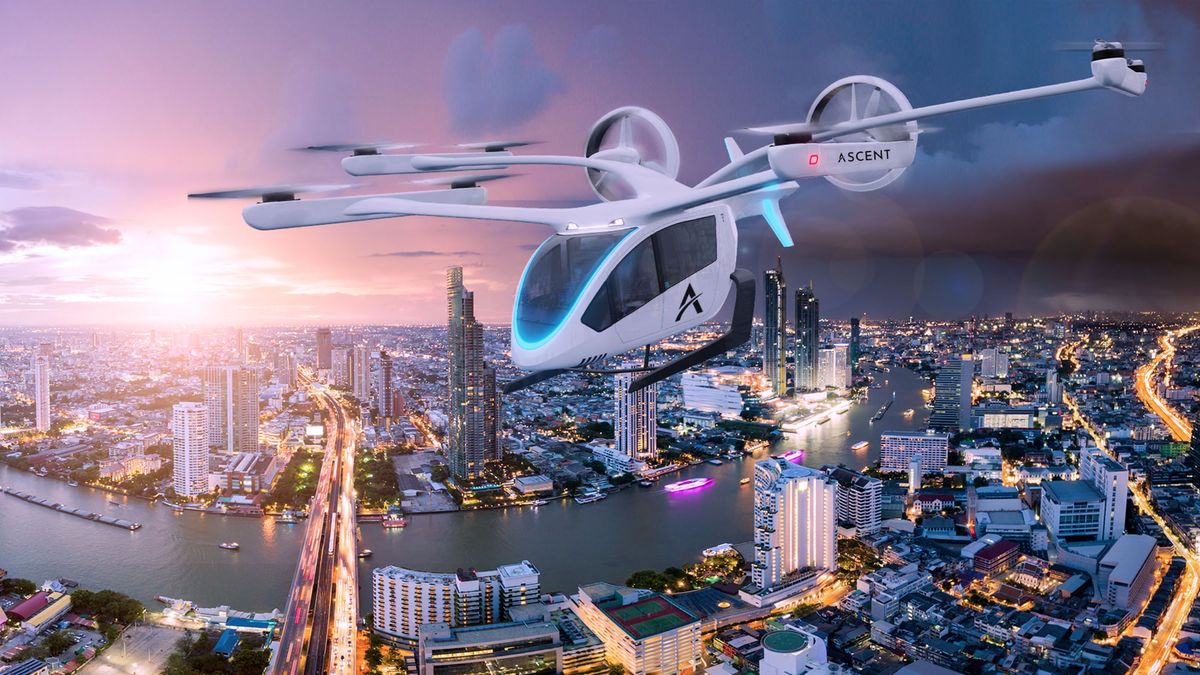Flying taxis take off as airlines spend billions on urban air mobility
They look like something from cartoon series The Jetsons, but these electric flying taxis could be the next travel breakthrough.

Flying taxis moved a step closer to becoming a fixture buzzing across urban skyscapes, as a closely watched effort was unveiled in Los Angeles and startups in the U.K. and Brazil made commercial breakthroughs.
Akin to an electrified helicopter, flying taxis are designed to accommodate just a few passengers: but they are quieter, more agile and emission-free, utilizing multiple small electric rotors.
The aircraft are designed to make short trips, with a range of 160km (100 miles) or less, and are expected to ferry well-heeled commuters above congestion-plagued urban spots – to the airport, for example, or a weekend getaway. Many eVTOL makers plan to eventually transition to pilotless aircraft.
Commercial use of eVTOLs is expected to begin with carrying packages before passengers are added to the cabins. Automated flights, without pilots, will come around five years later, as global regulators work out their approaches to safety.
Vertical set to soar
Vertical Aerospace Group, based in Bristol, England, won conditional orders for as many as 1,000 electric aircraft that could total US$4 billion from buyers including American Airlines and Virgin Atlantic, it announced last week.
Vertical is developing the VA-X4, a zero-emission four-passenger aircraft that it says can fly as fast as 320kph (200mph) per hour over a range of more than 160km (100 miles). The company plans to conduct its first test flight of the VA-X4 later this year, with certification as early as 2024.
“There’s a real appetite in the U.S. public market for this kind of technology,” said Vertical founder Stephen Fitzpatrick. “It’s not just flying taxi. This is the dawn of the electric aviation era.”
American Airlines, which is investing US$25 million in Vertical, placed a nonbinding order for 250 aircraft valued at about $1 billion, with an option to purchase another 100.
American also will help Vertical work on passenger operations and infrastructure development in the U.S. The airline said its order, which is part of a commitment to cut carbon emissions, could allow it to transport customers quickly between city centers and airports.
Virgin Atlantic took options for as many as 150 aircraft and will explore a joint venture with Vertical to develop a short-haul network for them in the U.K.
Meanwhile, Brazil’s Embraer said it’s in talks to merge its unit developing electric vertical takeoff and landing aircraft into a public company.
And in California, startup Archer Aviation showcased its future eVTOL after nabbing a US$20 million investment from United Airlines.
The carrier plans to buy as many as 200 of the aircraft, dubbed Maker, with plans to one day shuttle customers to and from LAX, soaring above the traffic-choked city.
The Maker electric vertical takeoff and landing vehicle will have a 100km (60 mile) range and fly at 240kph (150mph) when it enters commercial service in 2024, according to California-based Archer.
While none of these craft are certified for commercial use, approvals for electric flying taxis could come as early as 2024, according to Europe’s top aviation regulator.
Airlines are placing orders because they see the potential to develop a new business tied to local transport, as their main activity shuttling people on longer trips comes under pressure over carbon emissions and the impact of the Covid-19 pandemic.
“We believe that this is the beginning of the next big evolution of urban air mobility,” said Domhnal Slattery, chief executive officer of aircraft lessor Avolon Holdings, which is investing US$15 million in Vertical Aerospace. “This is probably as significant as the jet age.”
This article is published under license from Bloomberg Media: the original article can be viewed here



